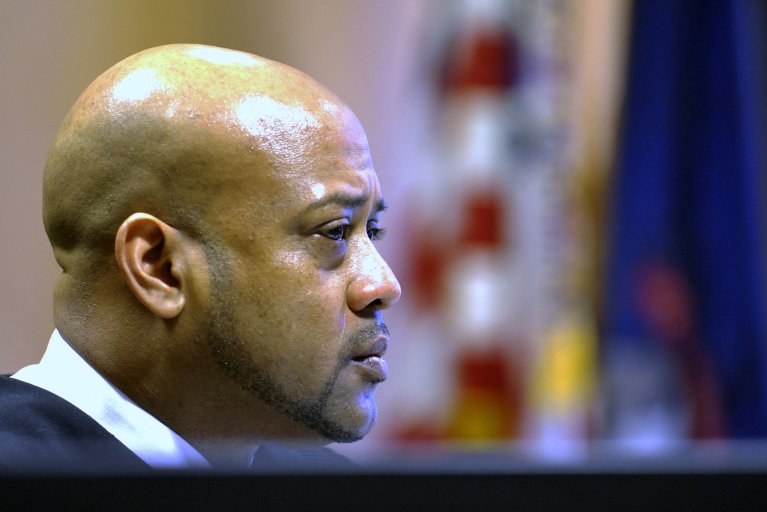Wages for educators in the federal Head Start program for preschool-age children from low-income families will rise in the coming years, thanks to a new federal rule finalized last week.
The boost could make the vital teaching job more attractive, but it may not reverse ongoing trends that limit the number of students Head Start programs are able to serve, and the number of Head Start programs that can keep their doors open.
Head Start serves children ages 0 to 5 whose families are living below the federal poverty line. The program launched in 1965 as part of President Lyndon B. Johnson’s War on Poverty. It’s now a key component of America’s fractured and ever-evolving patchwork system of child care and early-learning options, many of which cost families thousands of dollars a year.
The total number of preschool-age students attending Head Start programs has dropped considerably over the last decade, from 850,000 in 2015 to 532,000 in 2023.
Even before the pandemic, Head Start reached only half of America’s preschool-age children in poverty. During the 2022-23 school year, only slightly more than one-third of eligible children living in poverty, as defined by the U.S. Census, attended Head Start programs, according to analyses of federal data by the National Institute for Early Education Research (NIEER) and the Center for American Progress, a left-leaning think tank.
Some states have openings for a much larger share of students living in poverty than others, according to a 2020 report from the U.S. Government Accountability Office. Mississippi and Oregon, at that time, had more than 50 seats for every 100 eligible students. Nevada, meanwhile, had fewer than 10 seats per 100 eligible students.
Staffing shortages, which vary from place to place, help explain some of the challenges Head Start programs have had. In October 2023, 15 percent of staff positions in Head Start programs were vacant, according to a survey of Head Start program operators by the National Head Start Association. In 2022, Early Head Start programs, which serve the youngest children, saw roughly 3 in 10 of their staff members leave, according to an analysis of federal data by the Urban Institute.
Aiming to combat those trends, a new rule from the U.S. Department of Health and Human Services went into effect on Aug. 21 that will require Head Start programs with more than 200 slots for students to raise employees’ wages by 2031 to match what a local school district is offering to public pre-K teachers, or 90 percent of what kindergarten teachers make in places without public pre-K. Programs with fewer than 200 seats must demonstrate measurable increases in salary increases, though they won’t be held to the same strict standard.
The average Head Start teacher salary will grow roughly $10,000 by then, the agency estimates. Nationwide, the average annual salary for Head Start teachers is just below $40,000. In some states, the average is even lower. By contrast, the average public K-12 teacher salary is just over $70,000.
The rule also requires providers to expand health care benefits and expand mental health supports for students.
“This rule will raise wages for thousands of teachers and staff and help ensure that our most vulnerable children have access to this essential educational opportunity,” HHS Secretary Xavier Becerra said in a statement.
Roughly half of program operators who answered the Head Start Association survey last October said compensation was the biggest reason why they were losing staff.
The association’s executive director, Yasmina Vinci, applauded the rule in a statement, saying it will “allow programs to continue doing what they do best: providing a safe, healthy, and well-rounded classroom experience for young children, while also offering essential support and resources to their families beyond the classroom.”
Funding challenges remain for Head Start programs nationwide
Vinci’s statement wasn’t entirely laudatory, though.
“The organization remains concerned that, if Congress and future administrations do not agree to [funding] increases, the impact of the final rule could prove devastating, by significantly reducing the number of children and families served by Head Start programs,” she wrote.
Money for Head Start flows from the federal government directly to local program operators, which can include local school districts, nonprofits, municipal and tribal governments, and for-profit companies.
Congress mandates allocating federal Head Start funds using a complicated funding formula that includes a base amount, a “cost-of-living adjustment” to ensure continuity of service levels from the prior year, and an additional set of funds that can only be used for certain functions, like staff compensation and program expansion. Providers must match at least 20 percent of the federal allocation. States can also apply on behalf of local Head Start providers for two sets of additional grants.
Some states offer supplemental funds to increase Head Start capacity. But when that additional support disappears, Head Start programs that rely on it face devastating choices. Alaska, for instance, has reduced its share in recent years, which means some providers have had to ask staff to volunteer their time, and others have had to shut down altogether.
Other programs, as in Massachusetts and Ohio, have fallen victim to the kinds of staffing woes that have plagued school districts nationwide in recent years. Providing early learning experiences can be grueling, exhausting, and thankless, causing many educators to seek more lucrative and less challenging employment elsewhere.
As a result of these and other factors, the number of “funded students” nationwide is typically lower than the number of students who actually enroll—and far lower than the number of students who are eligible to attend.
To make matters more complicated, that’s not uniformly true across all Head Start programs, which are independently operated despite being fueled by public funding. Some Head Start programs in recent years have been funded for a larger number of students than they serve, said Steven Barnett, a professor of education and economics at the Rutgers Graduate School of Education, and senior co-director of NIEER.
A logical next step, then, would be to increase the number of enrolled students. But doing that without raising pay for Head Start educators could lead to higher staff turnover and lower-quality services for students, Barnett said.
He suspects that situation was the impetus for the new rule.
Even with the new mandate for Head Start programs to pay employees more, Congress doesn’t appear to be preparing a corresponding increase in funding. The Biden administration in its most recent budget proposal included adding half a billion dollars to Head Start appropriations, but lawmakers are unlikely to pass that proposal as written.
The rule gives the HHS secretary the option to extend waivers for compliance with the rule if Congress doesn’t increase Head Start funding by more than 1.3 percent by 2028.
HHS officials have said most programs should be able to cover the costs associated with the new rule with the funds they already receive.
“With the new rule, the quality and stability of Head Start programs will increase, and the number of children served would remain roughly the same as are currently being served,” the agency told Politico earlier this year. “Today, programs are under-enrolled largely because of instability in staffing.”
While navigating a tight labor market, Head Start providers have also felt pressure to expand their offerings. Full-day preschool has become more common in recent years, necessitating a larger number of staff or more hours for existing staff members.
“You take personnel costs, length of day, and number of kids—if two of those are going up, one of those is going down,” Barnett said. “ I wouldn’t want to be a program director stuck with this.”
The Charleston school district in South Carolina, for instance, cut 100 slots from its Head Start program this year in an effort to reduce class sizes and increase teacher compensation.
A different approach from the federal government, Barnett argues, could push for an increase in wages without sacrificing the number of slots for students. For instance, the federal government could have mandated a certain number of classrooms to stay open as a condition for getting federal funds.
An even more radical change, Barnett said, would have been to make everyone who works for Head Start an employee of the state where they work. The relatively young workforce could even lower the average cost for state-funded health insurance and pensions.
Bumping up wages without cutting seats “would be feasible at that scale,” Barnett said. “But for each independent little place to do that, I don’t see how they do it.”
Disclaimer: The copyright of this article belongs to the original author. Reposting this article is solely for the purpose of information dissemination and does not constitute any investment advice. If there is any infringement, please contact us immediately. We will make corrections or deletions as necessary. Thank you.






